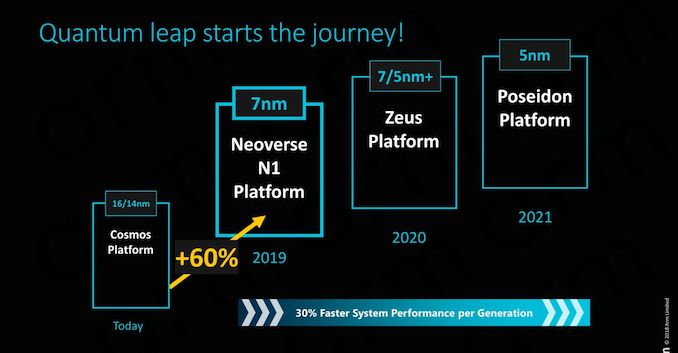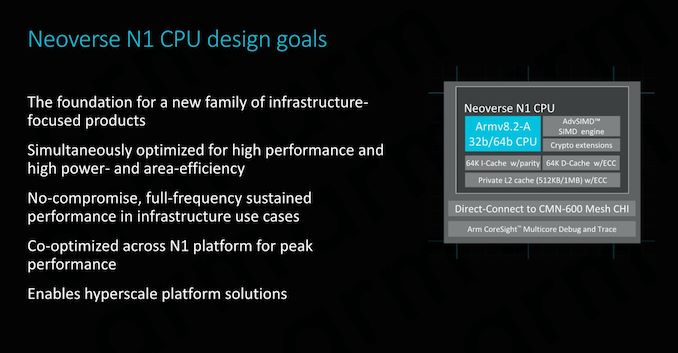AWS Designing a 32-Core Arm Neoverse N1 CPU for Cloud Servers
by Anton Shilov on December 2, 2019 1:00 PM EST
Amazon Web Services’s CPU design unit is working on a new multi-core processor for AWS servers. The new CPU is said to use Arm’s new Neoverse N1 architecture and would feature a considerably higher core-count when compared to AWS’s first-generation Graviton processor, which should result in a significant performance increase.
The yet-to-be-named AWS CPU will be based on Arm’s Neoverse N1 microarchitecture and will integrate as many as 32 cores, according to Reuters, which cites two sources with knowledge of the matter. The chip will also be able to connect to various special-purpose accelerators using a ‘fabric’ interface to greatly speed up certain workloads.
On a high level, the Neoverse N1 (aka Ares) to a large degree resembles Arm’s consumer-oriented Cortex-A76 microarchitecture: a 4-wide fetch/decode machine with a pipeline depth of only 11 stages that can reduce itself to 9 when needed. Meanwhile, the Neoverse N1 is designed to run at relatively high frequencies to provide maximum single-thread performance, it has a different cache architecture (coherent, with 1 MB L2 option, yet caches are technically not a part of the microarchitecture per se), and some other enhancements. Overall, with the Neoverse N1 Arm is looking at clocks of up to 3.1 GHz and a ~100 W TDP per SoC.
Readers who are interested to find out more about Arm’s Neoverse N1 platform can read our coverage from earlier this year, but the key thing in the context of the newly released information is that AWS continues to believe in custom Arm-based processors for servers and would be among the first adopters of the Neoverse N1. As noted above, the microarchitecture and the platform were optimized for cloud server workloads from the ground up, so with with further customization from Amazon, the 32-core processor promises to offer rather serious performance in applications that it was designed for. Will these CPUs challenge AMD’s Rome or Intel’s Cascade Lake? Probably not, but the importance of custom chips is their ability to offer the right total cost of ownership and sufficient performance, not win all the benchmarks.
Related Reading:
- Arm Announces Neoverse N1 & E1 Platforms & CPUs: Enabling A Huge Jump In Infrastructure Performance
- GIGABYTE's Cavium ThunderX2 Systems: 1U R181-T90 and 2U R281-T91
- Assessing Cavium's ThunderX2: The Arm Server Dream Realized At Last
- GIGABYTE's ThunderXStation with Dual Cavium ThunderX2 Arm SoCs
- Investigating Cavium's ThunderX: The First Arm Server SoC With Ambition
- Marvell Completes Acquisition of Cavium, Gets CPU, Networking & Security Assets
- Amazon AWS Offers Another AMD EPYC-Powered Instance: T3a
- Amazon Offers More EPYC: M5ad & R5ad Instances
Source: Reuters












12 Comments
View All Comments
Smell This - Tuesday, December 3, 2019 - link
The Amazon talking smiley-face on their boxes really creeps me out, but hopefully AWS and the Neoverse N1 will help keep the big boys (and girl) honest ...
CognexTech - Wednesday, April 1, 2020 - link
Thanks for this design explanation. visit https://www.cognextech.com/aws-training-and-certif... for more details.